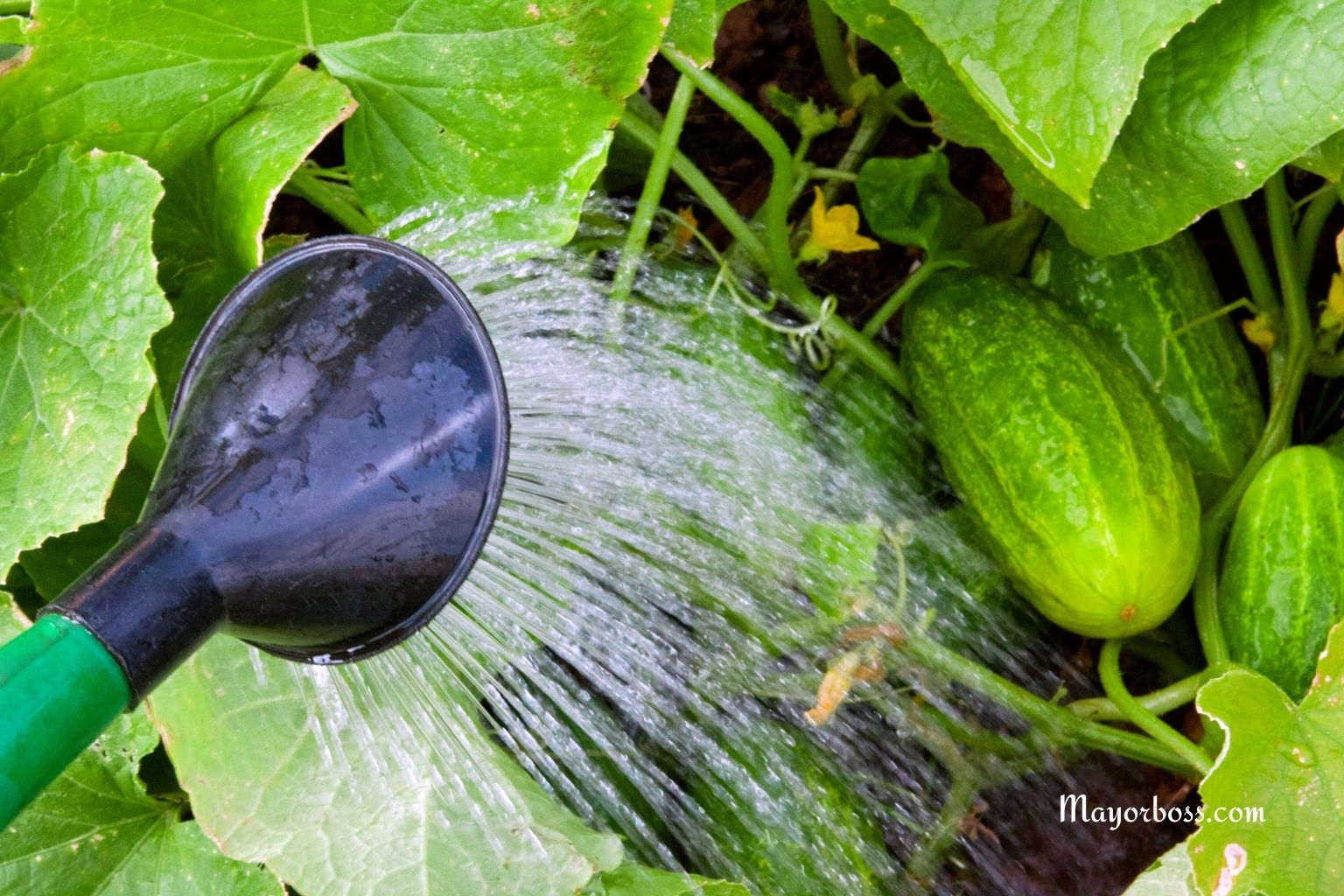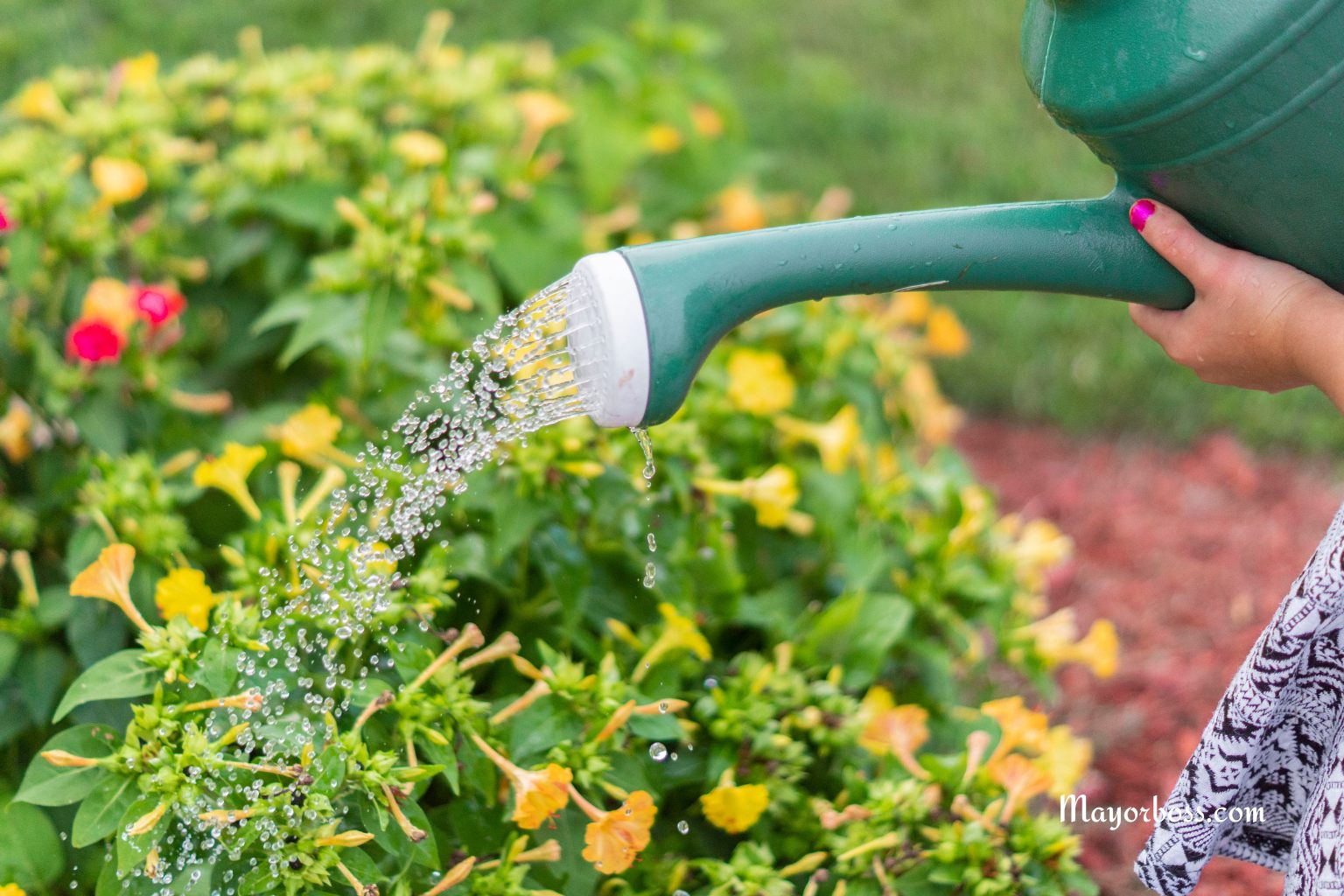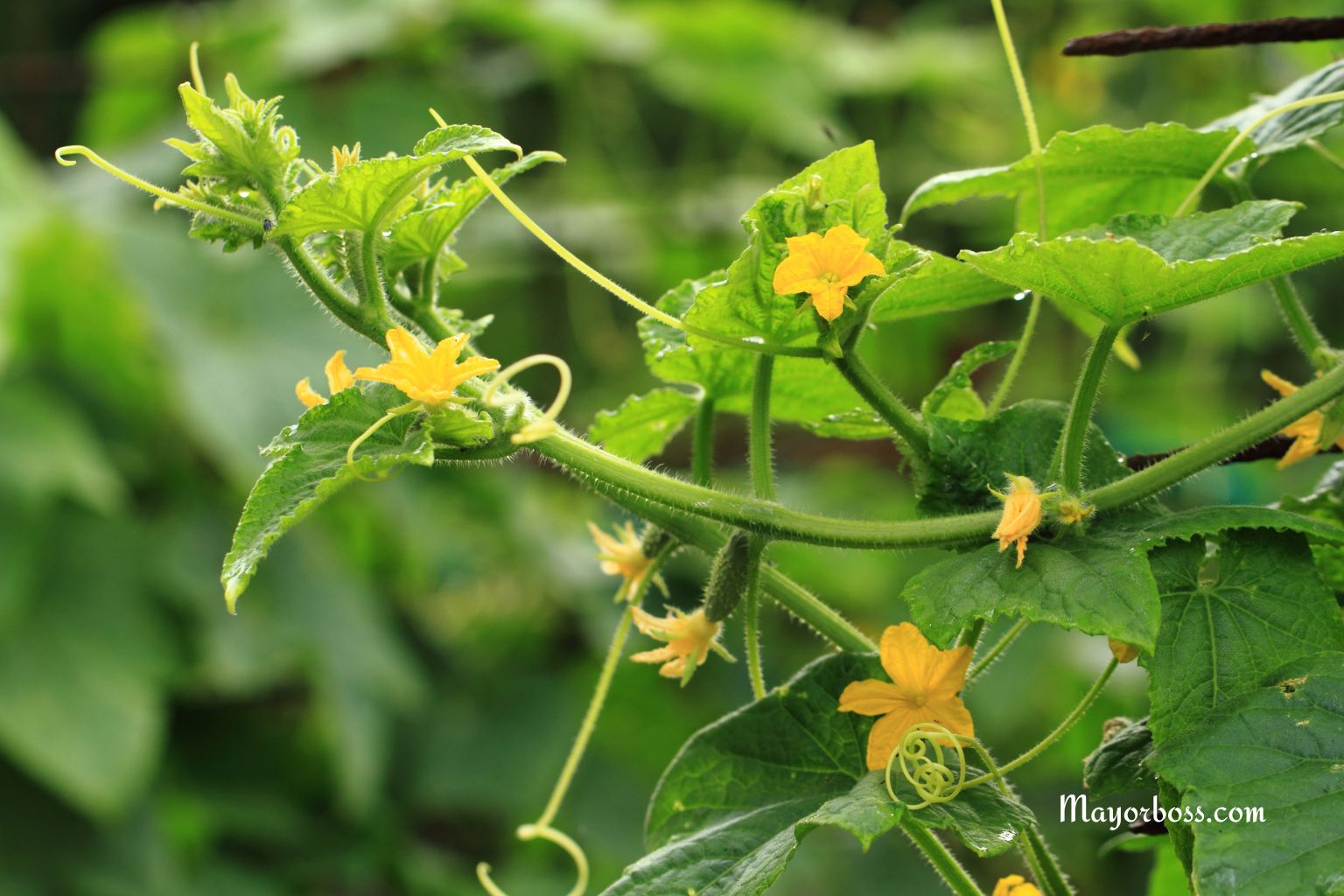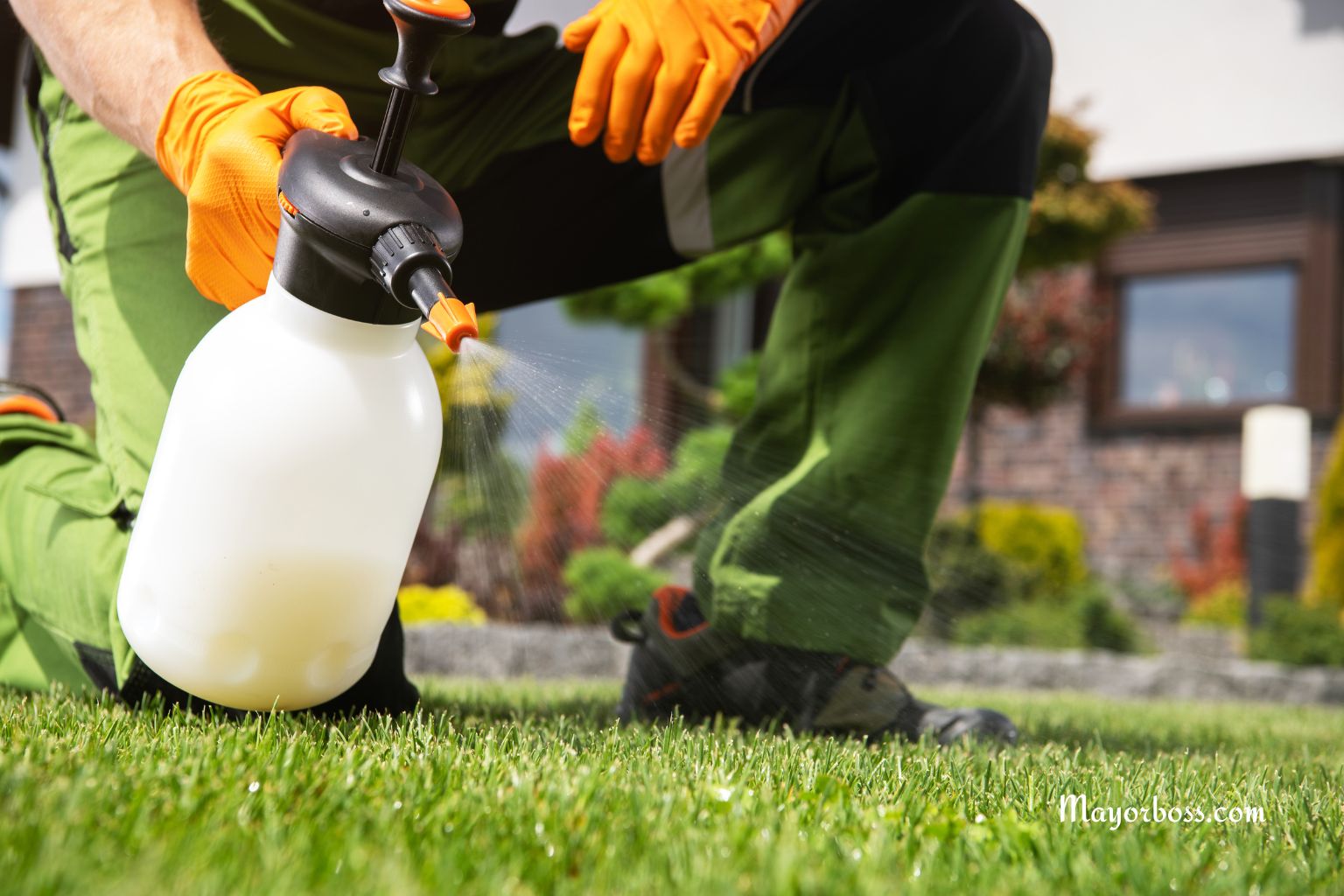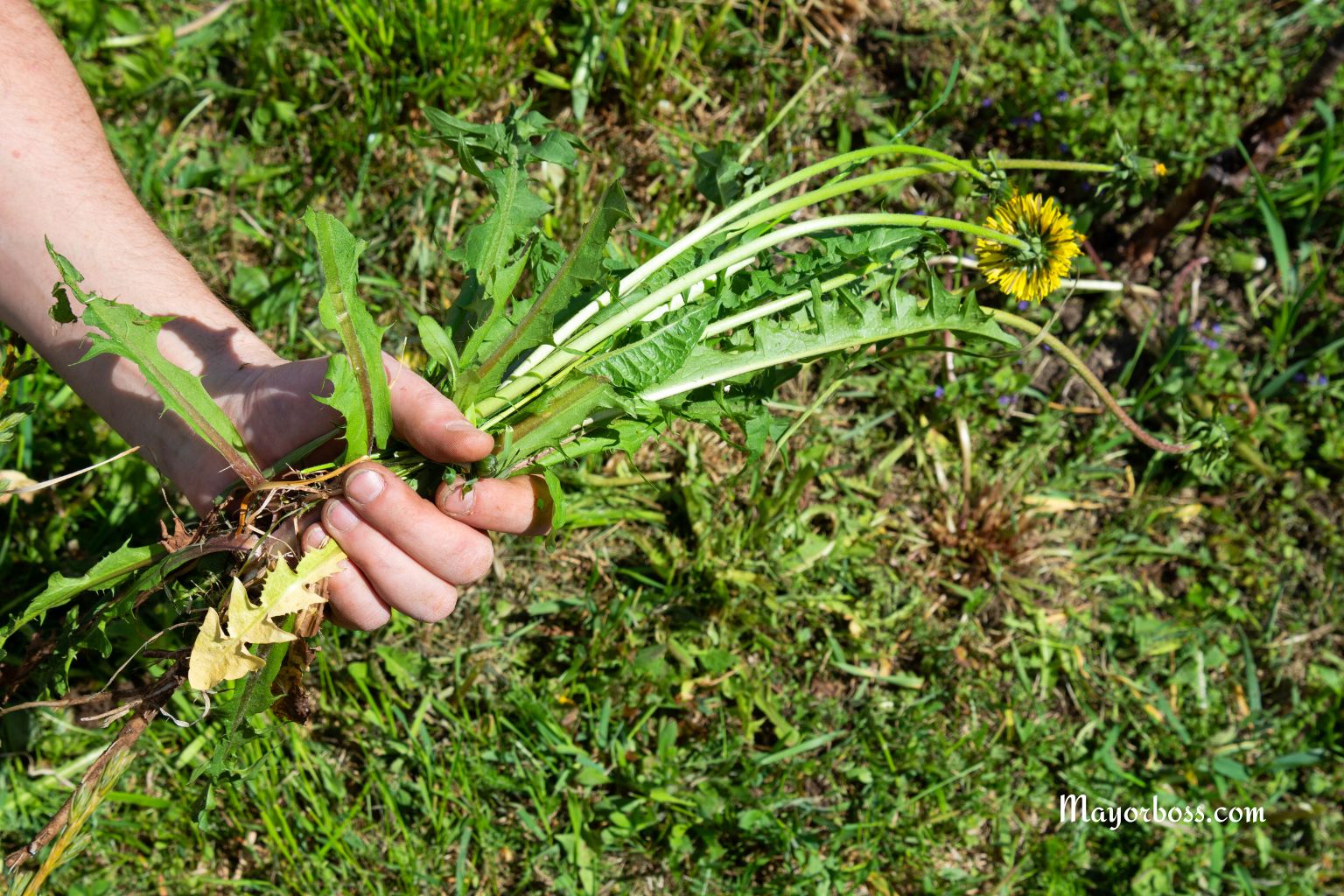Revive Your Dying Orchid and Keep It Blooming for Decades, Here’s How
To revive a struggling orchid, give it bright indirect light, water only when roots turn silvery, trim rotten roots, repot in fresh bark, and keep humidity near 40–60%. Feed lightly during growth and allow a cool, darker rest at night. With steady care, most orchids return to bloom within 8–12 weeks.
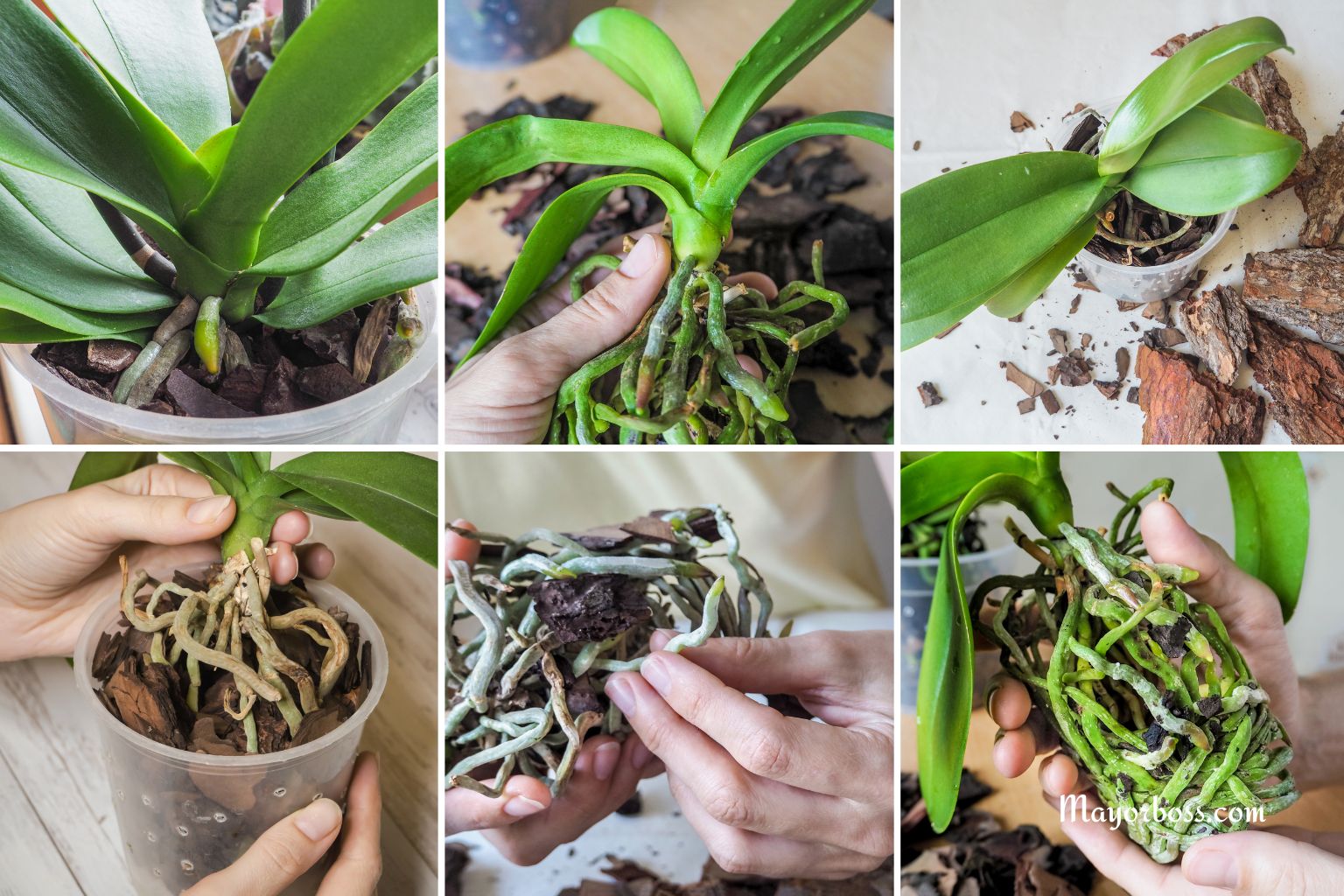
First, read your orchid’s signals
Orchids “talk” through their leaves, roots, and blooms.
- Wrinkled, leathery leaves suggest dehydration or root damage.
- Yellow leaves often follow overwatering or too much light.
- Mushy, brown roots point to rot.
- Gray, papery roots need moisture.
- No blooms for months can reflect light, temperature, or feeding issues.
Knowing the pattern helps you choose the right fix instead of guessing.
Quick rescue plan, you can start today
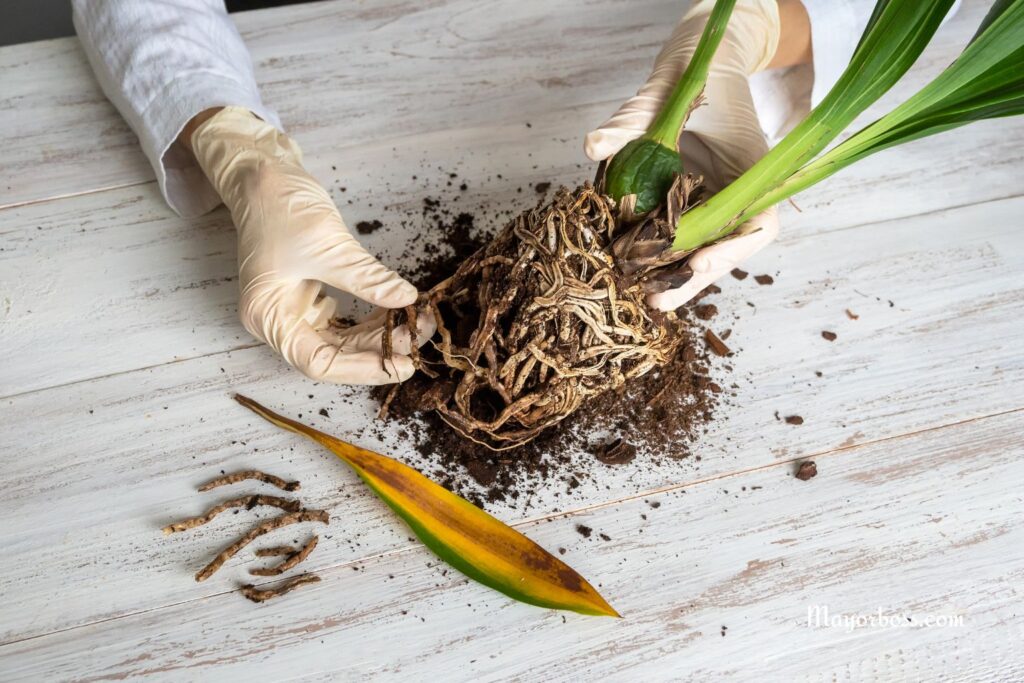
Move step by step with calm, steady hands.
- Check the roots. Ease the plant from its pot. Healthy roots look firm and green or silvery. Remove all dark, mushy parts with clean, sharp scissors. Wipe tools with alcohol first.
- Refresh the potting mix. Old mix breaks down and holds too much water. Use medium orchid bark. Add a little sphagnum moss only if your home is very dry.
- Right-size the pot. Orchids prefer a snug fit. Choose a pot that fits the fresh root ball with a small margin. Clear pots help you watch the roots.
- Replant. Set the base at the rim level, then tuck bark around the roots. Tap the pot so the bark settles without packing too tightly.
- Water once. Rinse with room-temperature water until it flows out of the bottom. Then let it drain well. Do not leave water in a saucer.
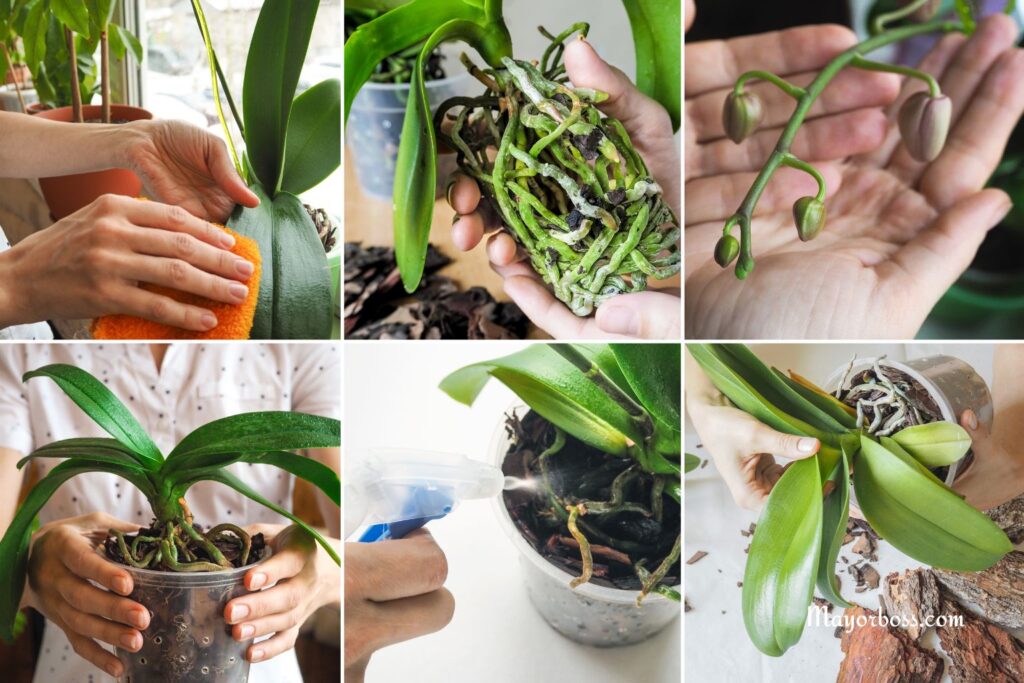
Master watering with the root color test
Overwatering harms orchids more often than thirst.
- Look at the roots through a clear pot or lift the top bark.
- Silvery roots mean it is time to water.
- Green roots mean wait.
- Most homes need watering every 7–10 days in warm months and every 10–14 days in cool months.
Pour water over the bark until it runs out, then let it drip dry. Never let the pot sit in water.
Give the right light without burning
Phalaenopsis, the common moth orchid, thrives in bright, indirect light.
- East windows give gentle morning sun.
- South or west windows need a sheer curtain.
- Leaves should look medium green. Very dark leaves suggest too little light; yellow or reddish leaves suggest too much.
If you use grow lights, keep the top leaves about a hand’s width under the fixture for 12–14 hours each day.
Set the humidity and airflow
Orchids enjoy 40–60% humidity and fresh air.
- Group plants together or place the pot on a pebble tray with water below the pot base.
- Run a small fan in the room to keep air moving. Gentle airflow lowers the risk of fungus.
Feed lightly, then flush
Orchids need small, steady meals during active growth.
- Use a balanced orchid fertilizer at quarter strength every second or third watering.
- Once a month, rinse the pot with plain water to prevent salt buildup.
- Pause feeding during bloom rest if growth stalls.
Support the natural bloom cycle
Most Phalaenopsis bloom once or twice each year.
- They like warm days and slightly cooler nights. Aim for nights about 4–6°C cooler than days.
- After blooms fade, you have two options:
- Encourage a side branch: Cut the spike above a fat node about the middle. This may lead to a smaller, sooner bloom.
- Rest and rebuild: Cut the spike near the base. The plant shifts energy to roots and leaves for a stronger next show.1
Weekly and monthly routine
A steady routine keeps orchids thriving for years.
Every week
- Check the root color to decide on watering.
- Feel the leaf texture. Plump leaves are a good sign.
- Wipe leaves with a soft, damp cloth to remove dust.
Every month
- Flush with plain water once.
- Inspect roots and crown for rot or pests.
- Rotate the pot a quarter turn so light reaches all sides.
Every 12–18 months
- Repot into fresh bark when the mix breaks down or roots coil tightly.
Avoid these common mistakes
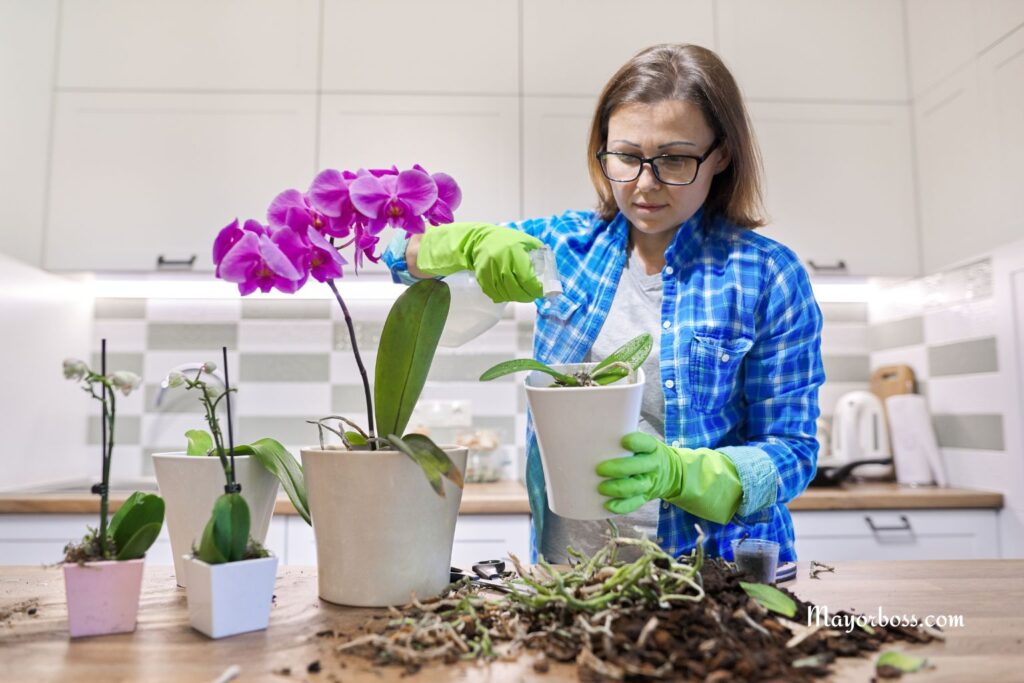
- Watering on a schedule without checking roots. Let the plant tell you when it is ready.
- Using regular potting soil. Roots need air; bark gives it.
- Soaking the crown. Water lodged in the leaf base can cause crown rot. Pour water around the inner rim of the pot instead.
- Keeping it in deep shade. Without light, buds drop and leaves sag.
- Overfeeding. Salts burn roots. Dilute, then flush monthly.
What to do about pests and diseases
- Mealybugs or scale: Dab pests with a cotton swab dipped in alcohol. Repeat weekly until gone.
- Spider mites: Increase humidity and rinse leaves in the sink.
- Fungal spots: Improve airflow and avoid wet leaves at night.
- Root rot: Trim, repot in fresh bark, and reduce watering frequency.
How to keep blooms lasting longer
Once the spikes open, a few simple habits extend the show.
- Keep the plant away from heat vents and cold drafts.
- Provide bright, indirect light, not harsh sun.
- Water when roots turn silvery, not sooner.
- Do not mist flowers; petals spot easily.
- Stake spikes gently so blooms stand tall without strain.
A note on patience and expectations
Orchids are slow and steady plants. After a rescue, they may focus on roots and leaves first. That is good news. Strong roots unlock future blooms. Stay consistent for 8–12 weeks, and you will often see new leaves, fat green roots, and a fresh spike forming.
When to seek a fresh start
If the crown has collapsed into brown mush or all roots are gone, the plant may not recover. You can still try to save a healthy leaf based on damp sphagnum in a ventilated box. If that fails, start again with a healthy plant and apply the same routine from day one.
Takeaways
- Bright, indirect light, not shade or harsh sun.
- Water when roots turn silvery; let excess drain.
- Bark mix, snug pot, firm green roots.
- Humidity near 40–60% with gentle airflow.
- Light feeding during growth, monthly flush.
- Cool nights help trigger spikes.
With this plan, your orchid can bloom, rest, and bloom again, year after year.
FAQs
1) How often should I water a Phalaenopsis orchid?
Check the roots. Water when most roots look silvery. That often means every 7–10 days in warm months and every 10–14 days in cool months.
2) Can I use ice cubes to water an orchid?
Ice can shock roots. Use room-temperature water. Pour slowly through the bark until water runs out, then drain well.
3) What kind of pot is best?
A pot with many drainage holes and a snug fit. Clear plastic pots help you monitor root color and moisture.
4) Why are my orchid’s buds falling off before opening?
This “bud blast” often follows sudden temperature changes, low humidity, or low light. Stabilize the environment, raise humidity, and keep light bright yet indirect.
5) When will it bloom again after rescue?
With steady light, proper watering, and mild night cooling, many Phalaenopsis send a new spike within 8–12 weeks. Some need a full season to rebuild strength. Patience pays off.


